After getting the tips roughed out, I do some final work on the limb thickness before prepping for long string tillering.
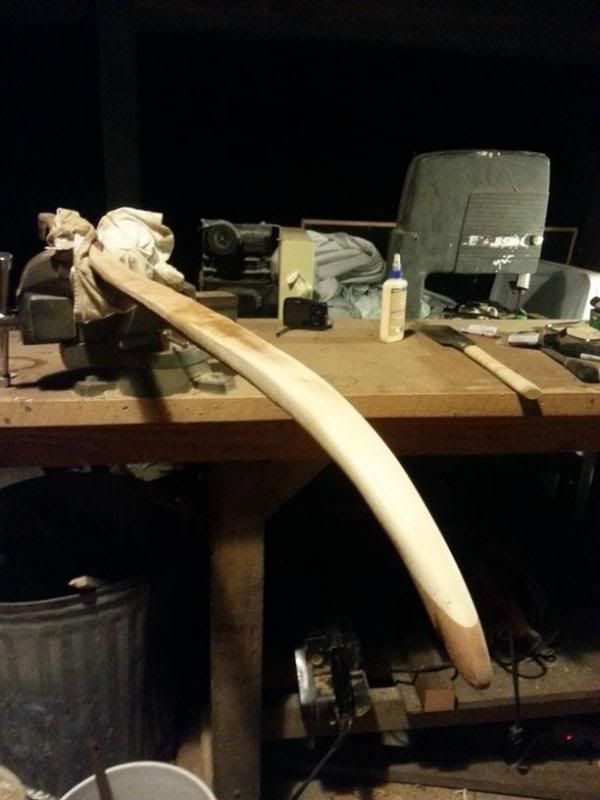
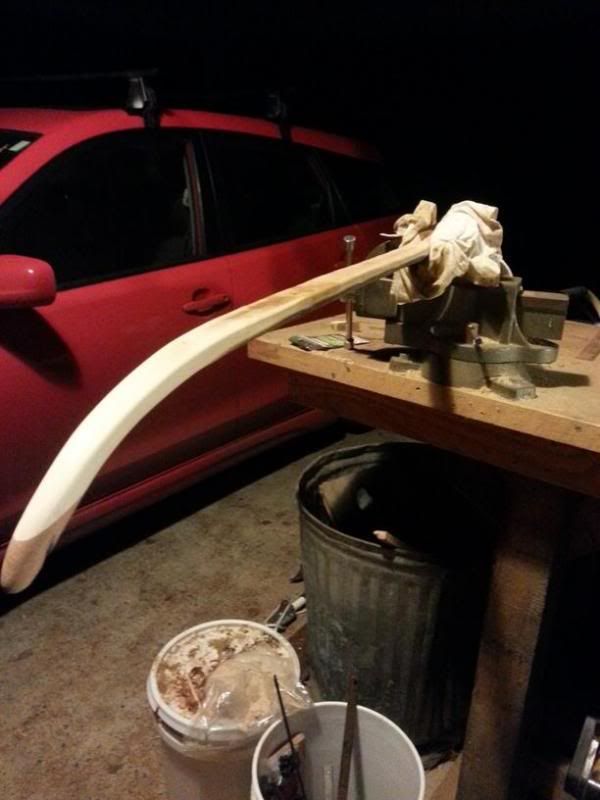
From this point on its only the cabinet scraper and a finer Nicholson for the rest of the tiller.
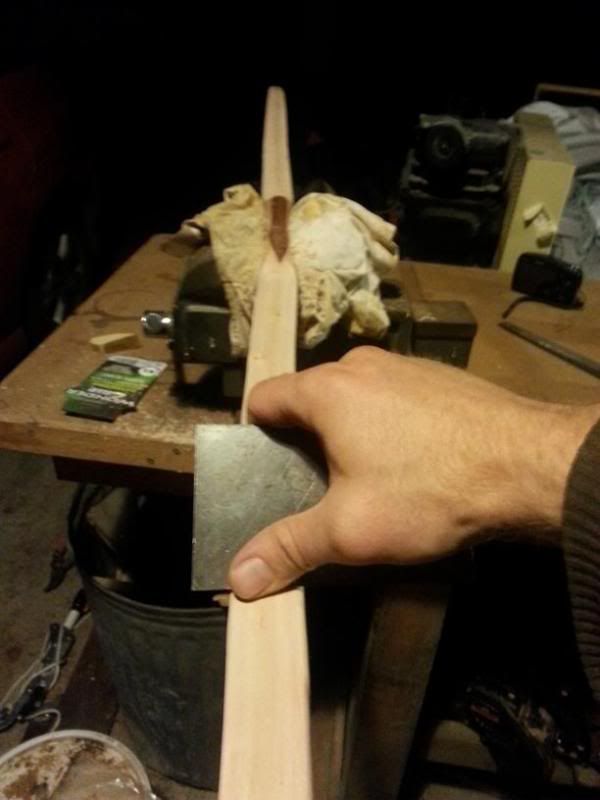
Here she is on the tree, ready for long string.
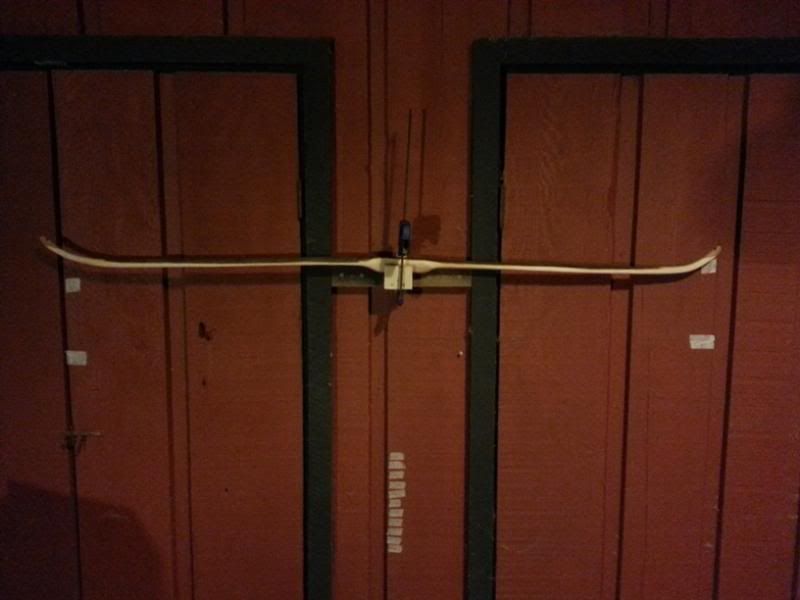
I try to go very slow, often flipping the bow so I can find any hidden unevenness in limb bending. One thing you can't show in pictures is the limb movement as the bow starts to flex... Limb movement is something that I think is more valuable than a snapshot, in helping to judge tiller. Others have stated this in the past and I really agree moreand more as I make more bows.
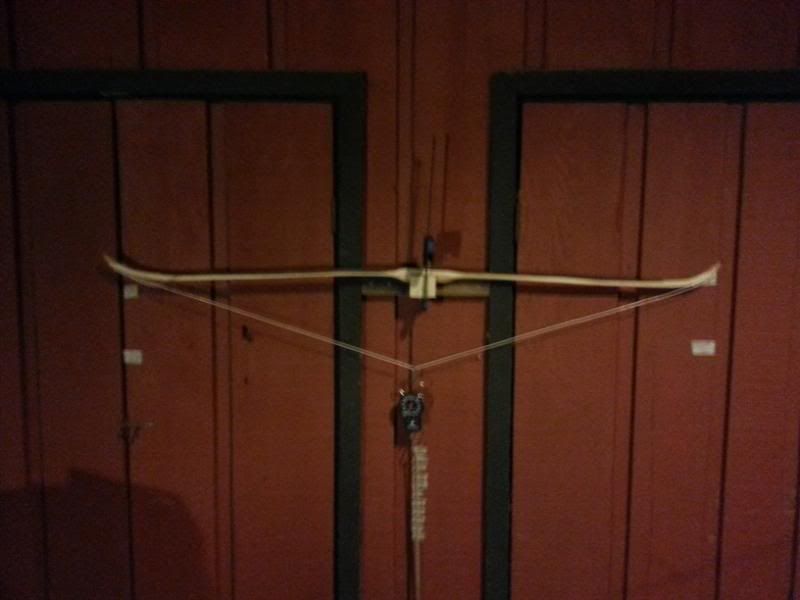
Here the bow is showing some stiffness in both outer limbs (Upper limb to the left)
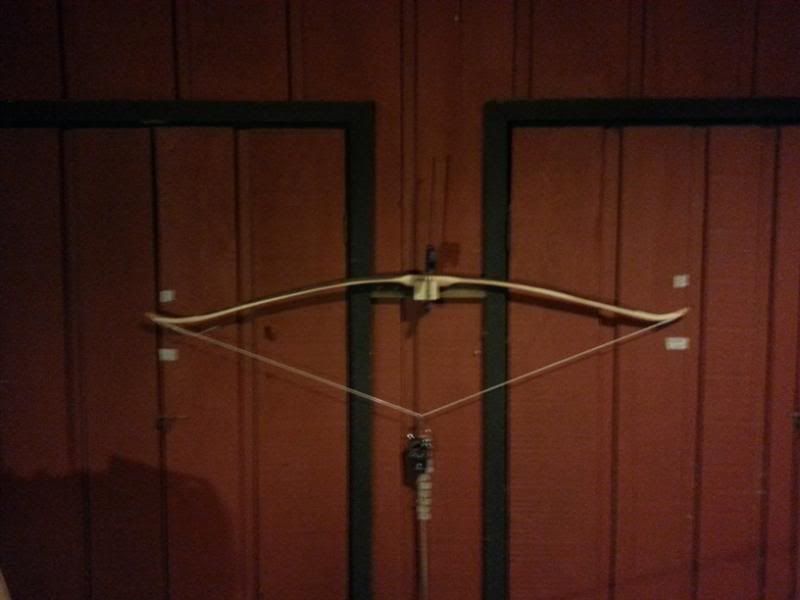
Lower limb to the left
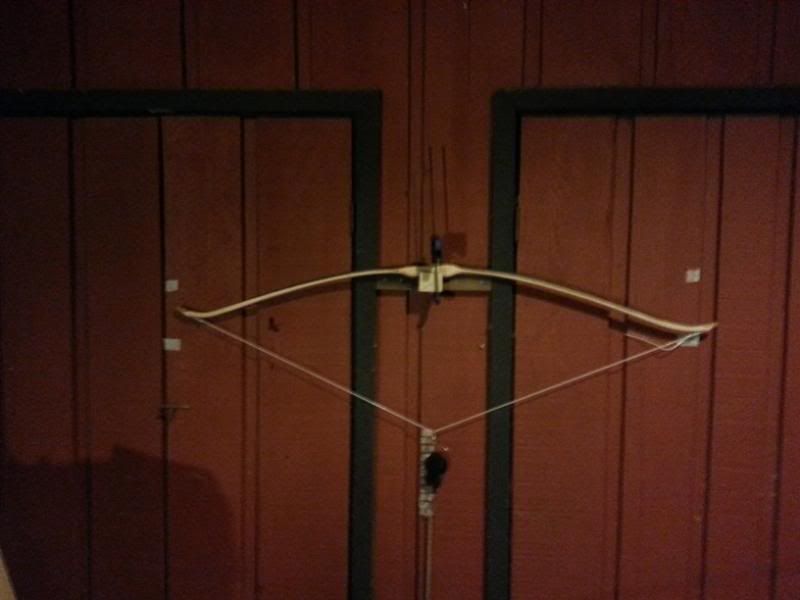
When you're tillering a deflexed bow, I think its important that the inner limbs still need to work. Leaving them too stiff and making your outer limbs do all the work, can cause big problems that don't show up till later in the tillering process. And by then a lot of the damage is already done.
A little more work and the bow is just about ready to brace (Sorry for the fuzzy pic).
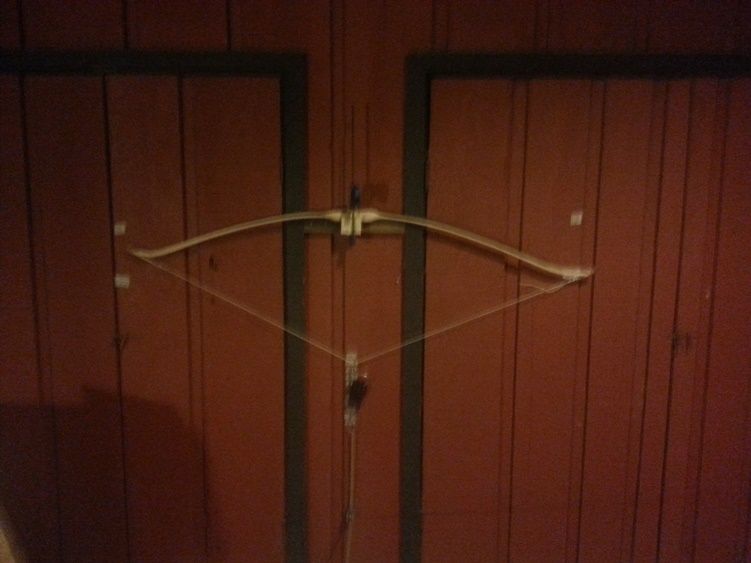
Here is the set picked up during long string tillering (maybe a 1/4 inch, but its there. I rarely experience no-set tillering).

The next step is to twist up a string... and get ready for the first brace (always a gut wrencher

).
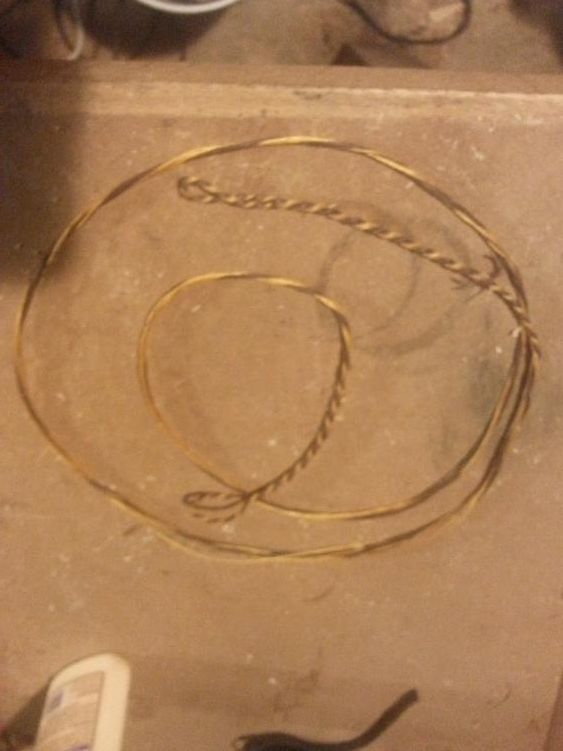
More to come whenever I can...
Gabe